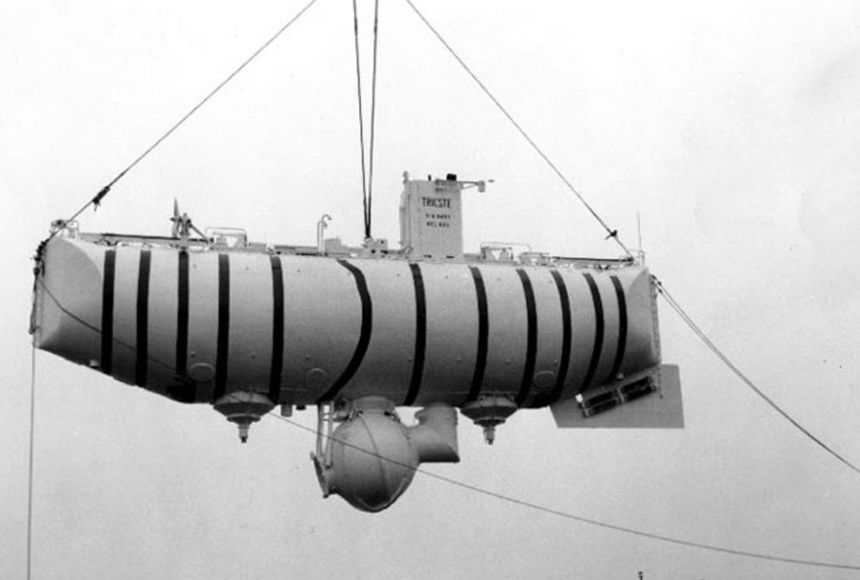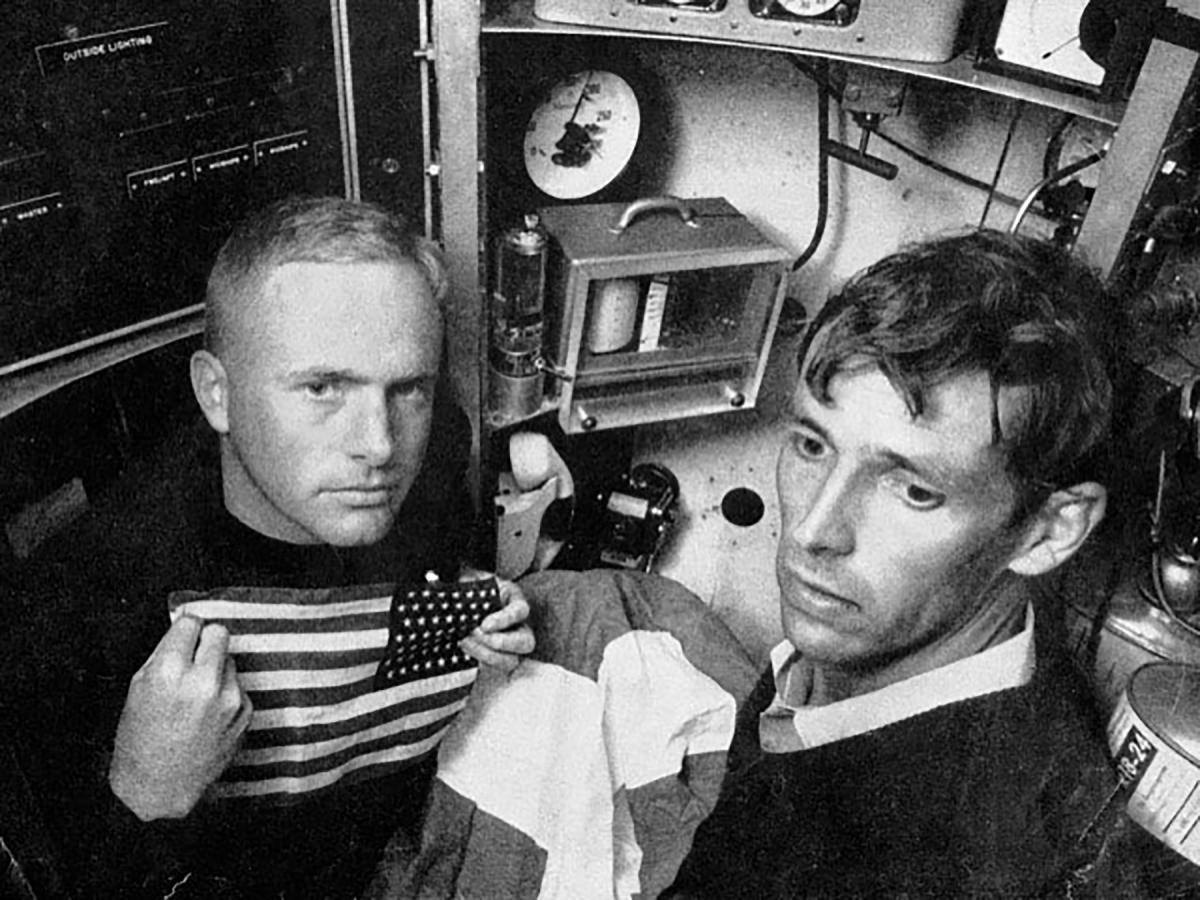The Dive
On the day of the dive, the ocean had a lot of waves. The Trieste was designed for deep, calm waters, so it was fragile. Some of the equipment, like the communication systems and the depth gage, broke off.
The crew debated, and in the end, decided to do the dive anyways.
As a result of the test dives, everyone knew exactly what to do and how, and the preparations went smoothly.
The Trieste being hauled into the diving site

Under the water, it was very dark and next-to-freezing. Once they passed 9000 meters, the temperature inside was 4.5 degrees. Suddenly, the crew heard a pop and they thought the sphere cracked. Turns out it was the glass window. Since everything still worked, they kept going.
Don Walsh and Jacques Piccard took a selfie at the bottom of Challenger Deep with their national flags

After 5 ½ hours, the Trieste hit rock bottom.
They took a picture and looked out the window. They were surprised to find a flatfish because they didn’t think there were fish at such depth.
After collecting measurements for 20 minutes and trying to see past the cloud of silt around them, they released the pellets and floated back up. They reached the surface after 3 hours and 14 minutes.
Trieste was supposed to rise during the day, but ended up surfacing during the night. The job of putting the Trieste back into the ship required a man in the water. As a consequence, the bathyscaphe needed to wait until daylight to be recovered.